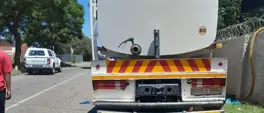Baby saver boxes controversy: 'They should be a lifesaving last resort' – Baby Savers South Africa
Amy Fraser
5 May 2025 | 10:08Are baby saver boxes giving hope or creating harm?
702's Bongani Bingwa interviews Nadene Grabham, cofounder of Baby Savers South Africa and Operations Director at Door of Hope Children's Mission.
Listen below:
Baby saver boxes – to some, they are a lifeline, a miracle that offers vulnerable infants a second chance at life.
For babies who might otherwise be abandoned in a dustbin or left in a field, they offer safety, dignity, and hope.
But not everyone agrees.
The Gauteng Department of Social Development (DSD) issued a directive prohibiting organisations from using baby saver devices, arguing that they strip away parental responsibility.
For Grabham, however, the situation is more nuanced.
She says that while it’s heartbreaking to find babies in the boxes, it's also a relief to know they’re safe, not left somewhere in danger.
She acknowledges the sadness behind the need for places like Door of Hope, where mothers, often desperate and without access to police stations, clinics, or hospitals, go as a last resort.
"It should be used as a life-saving device."
- Nadene Grabham, Baby Savers South Africa
Grabham emphasises that these boxes are carefully regulated and monitored, and are used effectively around the world.
She explains how the baby savers work: built into a secure wall, the box includes a pressure plate, magnetic lock, and alarm system.
When a baby is placed inside, the alarm is triggered and a monitoring system activates, allowing staff to see the infant immediately.
A first responder, who lives on-site, unlocks the hatch from inside, documents the placement with a photo, removes the baby, and conducts a thorough health check.
"Then we bathe the baby, dress the baby, feed the baby and then start loving the baby."
- Nadene Grabham, Baby Savers South Africa
Scroll up to the audio player to listen to the interview.
Get the whole picture 💡
Take a look at the topic timeline for all related articles.
Trending News
More in Local

14 September 2025 16:45
Madlanga Commission: Analysts dissect SAPS power struggle after Mkhwanazi’s claims

14 September 2025 14:05
Four dead in three separate incidents in Wallacedene, Kraaifontein

14 September 2025 12:51
Joburg dispatches additional water tankers to Westbury, Coronationville, reveals Morero











